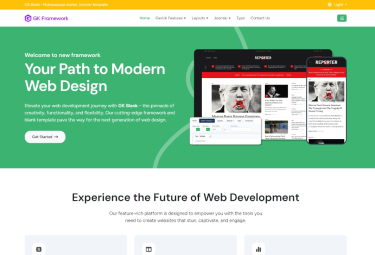From our blog
Deprecated: Non-static method SimplePie_Misc::fix_protocol() should not be called statically, assuming $this from incompatible context in
/data/www/gavick.com/public_html/libraries/simplepie/simplepie.php on line
837
Deprecated: Non-static method SimplePie_Misc::normalize_url() should not be called statically, assuming $this from incompatible context in
/data/www/gavick.com/public_html/libraries/simplepie/simplepie.php on line
9291
Deprecated: Non-static method SimplePie_Misc::parse_url() should not be called statically, assuming $this from incompatible context in
/data/www/gavick.com/public_html/libraries/simplepie/simplepie.php on line
9292
Deprecated: Non-static method SimplePie_Misc::parse_url() should not be called statically, assuming $this from incompatible context in
/data/www/gavick.com/public_html/libraries/simplepie/simplepie.php on line
1546
Strict Standards: call_user_func() expects parameter 1 to be a valid callback, non-static method SimplePie_Cache::create() should not be called statically in
/data/www/gavick.com/public_html/libraries/simplepie/simplepie.php on line
1550
Deprecated: Non-static method SimplePie_Misc::parse_url() should not be called statically, assuming $this from incompatible context in
/data/www/gavick.com/public_html/libraries/simplepie/simplepie.php on line
1546
Strict Standards: call_user_func() expects parameter 1 to be a valid callback, non-static method SimplePie_Cache::create() should not be called statically in
/data/www/gavick.com/public_html/libraries/simplepie/simplepie.php on line
1550
Deprecated: Non-static method SimplePie_Parse_Date::get() should not be called statically, assuming $this from incompatible context in
/data/www/gavick.com/public_html/libraries/simplepie/simplepie.php on line
3613
Deprecated: Non-static method SimplePie_Parse_Date::get() should not be called statically, assuming $this from incompatible context in
/data/www/gavick.com/public_html/libraries/simplepie/simplepie.php on line
3613
Deprecated: Non-static method SimplePie_Parse_Date::get() should not be called statically, assuming $this from incompatible context in
/data/www/gavick.com/public_html/libraries/simplepie/simplepie.php on line
3613
Deprecated: Non-static method SimplePie_Parse_Date::get() should not be called statically, assuming $this from incompatible context in
/data/www/gavick.com/public_html/libraries/simplepie/simplepie.php on line
3613
Deprecated: Non-static method SimplePie_Parse_Date::get() should not be called statically, assuming $this from incompatible context in
/data/www/gavick.com/public_html/libraries/simplepie/simplepie.php on line
3613
Deprecated: Non-static method SimplePie_Parse_Date::get() should not be called statically, assuming $this from incompatible context in
/data/www/gavick.com/public_html/libraries/simplepie/simplepie.php on line
3613
Deprecated: Non-static method SimplePie_Parse_Date::get() should not be called statically, assuming $this from incompatible context in
/data/www/gavick.com/public_html/libraries/simplepie/simplepie.php on line
3613
Deprecated: Non-static method SimplePie_Parse_Date::get() should not be called statically, assuming $this from incompatible context in
/data/www/gavick.com/public_html/libraries/simplepie/simplepie.php on line
3613
Deprecated: Non-static method SimplePie_Parse_Date::get() should not be called statically, assuming $this from incompatible context in
/data/www/gavick.com/public_html/libraries/simplepie/simplepie.php on line
3613
Deprecated: Non-static method SimplePie_Parse_Date::get() should not be called statically, assuming $this from incompatible context in
/data/www/gavick.com/public_html/libraries/simplepie/simplepie.php on line
3613
Deprecated: Non-static method SimplePie_Misc::absolutize_url() should not be called statically, assuming $this from incompatible context in
/data/www/gavick.com/public_html/libraries/simplepie/simplepie.php on line
14935
Deprecated: Non-static method SimplePie_IRI::absolutize() should not be called statically, assuming $this from incompatible context in
/data/www/gavick.com/public_html/libraries/simplepie/simplepie.php on line
9107
Deprecated: Non-static method SimplePie_Misc::absolutize_url() should not be called statically, assuming $this from incompatible context in
/data/www/gavick.com/public_html/libraries/simplepie/simplepie.php on line
14935
Deprecated: Non-static method SimplePie_IRI::absolutize() should not be called statically, assuming $this from incompatible context in
/data/www/gavick.com/public_html/libraries/simplepie/simplepie.php on line
9107
Deprecated: Non-static method SimplePie_Misc::absolutize_url() should not be called statically, assuming $this from incompatible context in
/data/www/gavick.com/public_html/libraries/simplepie/simplepie.php on line
14935
Deprecated: Non-static method SimplePie_IRI::absolutize() should not be called statically, assuming $this from incompatible context in
/data/www/gavick.com/public_html/libraries/simplepie/simplepie.php on line
9107
Deprecated: Non-static method SimplePie_Misc::absolutize_url() should not be called statically, assuming $this from incompatible context in
/data/www/gavick.com/public_html/libraries/simplepie/simplepie.php on line
14935
Deprecated: Non-static method SimplePie_IRI::absolutize() should not be called statically, assuming $this from incompatible context in
/data/www/gavick.com/public_html/libraries/simplepie/simplepie.php on line
9107
Deprecated: Non-static method SimplePie_Misc::is_isegment_nz_nc() should not be called statically, assuming $this from incompatible context in
/data/www/gavick.com/public_html/libraries/simplepie/simplepie.php on line
2635
Deprecated: Non-static method SimplePie_Misc::is_isegment_nz_nc() should not be called statically, assuming $this from incompatible context in
/data/www/gavick.com/public_html/libraries/simplepie/simplepie.php on line
2635
Deprecated: Non-static method SimplePie_Misc::get_element() should not be called statically, assuming $this from incompatible context in
/data/www/gavick.com/public_html/libraries/simplepie/simplepie.php on line
14955
Deprecated: Non-static method SimplePie_Misc::entities_decode() should not be called statically, assuming $this from incompatible context in
/data/www/gavick.com/public_html/libraries/simplepie/simplepie.php on line
9194
Deprecated: Non-static method SimplePie_Misc::entities_decode() should not be called statically, assuming $this from incompatible context in
/data/www/gavick.com/public_html/libraries/simplepie/simplepie.php on line
9194
Deprecated: Non-static method SimplePie_Misc::entities_decode() should not be called statically, assuming $this from incompatible context in
/data/www/gavick.com/public_html/libraries/simplepie/simplepie.php on line
9194
Deprecated: Non-static method SimplePie_Misc::entities_decode() should not be called statically, assuming $this from incompatible context in
/data/www/gavick.com/public_html/libraries/simplepie/simplepie.php on line
9194
Deprecated: Non-static method SimplePie_Misc::entities_decode() should not be called statically, assuming $this from incompatible context in
/data/www/gavick.com/public_html/libraries/simplepie/simplepie.php on line
9194
Deprecated: Non-static method SimplePie_Misc::entities_decode() should not be called statically, assuming $this from incompatible context in
/data/www/gavick.com/public_html/libraries/simplepie/simplepie.php on line
9194
Deprecated: Non-static method SimplePie_Misc::entities_decode() should not be called statically, assuming $this from incompatible context in
/data/www/gavick.com/public_html/libraries/simplepie/simplepie.php on line
9194
Deprecated: Non-static method SimplePie_Misc::entities_decode() should not be called statically, assuming $this from incompatible context in
/data/www/gavick.com/public_html/libraries/simplepie/simplepie.php on line
9194
Deprecated: Non-static method SimplePie_Misc::entities_decode() should not be called statically, assuming $this from incompatible context in
/data/www/gavick.com/public_html/libraries/simplepie/simplepie.php on line
9194
Deprecated: Non-static method SimplePie_Misc::entities_decode() should not be called statically, assuming $this from incompatible context in
/data/www/gavick.com/public_html/libraries/simplepie/simplepie.php on line
9194
Deprecated: Non-static method SimplePie_Misc::entities_decode() should not be called statically, assuming $this from incompatible context in
/data/www/gavick.com/public_html/libraries/simplepie/simplepie.php on line
9194
Deprecated: Non-static method SimplePie_Misc::entities_decode() should not be called statically, assuming $this from incompatible context in
/data/www/gavick.com/public_html/libraries/simplepie/simplepie.php on line
9194
Deprecated: Non-static method SimplePie_Misc::entities_decode() should not be called statically, assuming $this from incompatible context in
/data/www/gavick.com/public_html/libraries/simplepie/simplepie.php on line
9194
Deprecated: Non-static method SimplePie_Misc::entities_decode() should not be called statically, assuming $this from incompatible context in
/data/www/gavick.com/public_html/libraries/simplepie/simplepie.php on line
9194
Deprecated: Non-static method SimplePie_Misc::entities_decode() should not be called statically, assuming $this from incompatible context in
/data/www/gavick.com/public_html/libraries/simplepie/simplepie.php on line
9194
Deprecated: Non-static method SimplePie_Misc::entities_decode() should not be called statically, assuming $this from incompatible context in
/data/www/gavick.com/public_html/libraries/simplepie/simplepie.php on line
9194
Deprecated: Non-static method SimplePie_Misc::entities_decode() should not be called statically, assuming $this from incompatible context in
/data/www/gavick.com/public_html/libraries/simplepie/simplepie.php on line
9194
Deprecated: Non-static method SimplePie_Misc::entities_decode() should not be called statically, assuming $this from incompatible context in
/data/www/gavick.com/public_html/libraries/simplepie/simplepie.php on line
9194
Deprecated: Non-static method SimplePie_Misc::entities_decode() should not be called statically, assuming $this from incompatible context in
/data/www/gavick.com/public_html/libraries/simplepie/simplepie.php on line
9194
Deprecated: Non-static method SimplePie_Misc::entities_decode() should not be called statically, assuming $this from incompatible context in
/data/www/gavick.com/public_html/libraries/simplepie/simplepie.php on line
9194
Deprecated: Non-static method SimplePie_Misc::entities_decode() should not be called statically, assuming $this from incompatible context in
/data/www/gavick.com/public_html/libraries/simplepie/simplepie.php on line
9194
Deprecated: Non-static method SimplePie_Misc::entities_decode() should not be called statically, assuming $this from incompatible context in
/data/www/gavick.com/public_html/libraries/simplepie/simplepie.php on line
9194
Deprecated: Non-static method SimplePie_Misc::entities_decode() should not be called statically, assuming $this from incompatible context in
/data/www/gavick.com/public_html/libraries/simplepie/simplepie.php on line
9194
Deprecated: Non-static method SimplePie_Misc::entities_decode() should not be called statically, assuming $this from incompatible context in
/data/www/gavick.com/public_html/libraries/simplepie/simplepie.php on line
9194
Deprecated: Non-static method SimplePie_Misc::entities_decode() should not be called statically, assuming $this from incompatible context in
/data/www/gavick.com/public_html/libraries/simplepie/simplepie.php on line
9194
Deprecated: Non-static method SimplePie_Misc::entities_decode() should not be called statically, assuming $this from incompatible context in
/data/www/gavick.com/public_html/libraries/simplepie/simplepie.php on line
9194
Deprecated: Non-static method SimplePie_Misc::entities_decode() should not be called statically, assuming $this from incompatible context in
/data/www/gavick.com/public_html/libraries/simplepie/simplepie.php on line
9194
Deprecated: Non-static method SimplePie_Misc::absolutize_url() should not be called statically, assuming $this from incompatible context in
/data/www/gavick.com/public_html/libraries/simplepie/simplepie.php on line
14973
Deprecated: Non-static method SimplePie_IRI::absolutize() should not be called statically, assuming $this from incompatible context in
/data/www/gavick.com/public_html/libraries/simplepie/simplepie.php on line
9107
Deprecated: Non-static method SimplePie_Misc::element_implode() should not be called statically, assuming $this from incompatible context in
/data/www/gavick.com/public_html/libraries/simplepie/simplepie.php on line
14974
Deprecated: Non-static method SimplePie_Misc::absolutize_url() should not be called statically, assuming $this from incompatible context in
/data/www/gavick.com/public_html/libraries/simplepie/simplepie.php on line
14973
Deprecated: Non-static method SimplePie_IRI::absolutize() should not be called statically, assuming $this from incompatible context in
/data/www/gavick.com/public_html/libraries/simplepie/simplepie.php on line
9107
Deprecated: Non-static method SimplePie_Misc::element_implode() should not be called statically, assuming $this from incompatible context in
/data/www/gavick.com/public_html/libraries/simplepie/simplepie.php on line
14974
Deprecated: Non-static method SimplePie_Misc::absolutize_url() should not be called statically, assuming $this from incompatible context in
/data/www/gavick.com/public_html/libraries/simplepie/simplepie.php on line
14973
Deprecated: Non-static method SimplePie_IRI::absolutize() should not be called statically, assuming $this from incompatible context in
/data/www/gavick.com/public_html/libraries/simplepie/simplepie.php on line
9107
Deprecated: Non-static method SimplePie_Misc::element_implode() should not be called statically, assuming $this from incompatible context in
/data/www/gavick.com/public_html/libraries/simplepie/simplepie.php on line
14974
Deprecated: Non-static method SimplePie_Misc::absolutize_url() should not be called statically, assuming $this from incompatible context in
/data/www/gavick.com/public_html/libraries/simplepie/simplepie.php on line
14973
Deprecated: Non-static method SimplePie_IRI::absolutize() should not be called statically, assuming $this from incompatible context in
/data/www/gavick.com/public_html/libraries/simplepie/simplepie.php on line
9107
Deprecated: Non-static method SimplePie_Misc::element_implode() should not be called statically, assuming $this from incompatible context in
/data/www/gavick.com/public_html/libraries/simplepie/simplepie.php on line
14974
Deprecated: Non-static method SimplePie_Misc::absolutize_url() should not be called statically, assuming $this from incompatible context in
/data/www/gavick.com/public_html/libraries/simplepie/simplepie.php on line
14973
Deprecated: Non-static method SimplePie_IRI::absolutize() should not be called statically, assuming $this from incompatible context in
/data/www/gavick.com/public_html/libraries/simplepie/simplepie.php on line
9107
Deprecated: Non-static method SimplePie_Misc::element_implode() should not be called statically, assuming $this from incompatible context in
/data/www/gavick.com/public_html/libraries/simplepie/simplepie.php on line
14974
Deprecated: Non-static method SimplePie_Misc::absolutize_url() should not be called statically, assuming $this from incompatible context in
/data/www/gavick.com/public_html/libraries/simplepie/simplepie.php on line
14973
Deprecated: Non-static method SimplePie_IRI::absolutize() should not be called statically, assuming $this from incompatible context in
/data/www/gavick.com/public_html/libraries/simplepie/simplepie.php on line
9107
Deprecated: Non-static method SimplePie_Misc::element_implode() should not be called statically, assuming $this from incompatible context in
/data/www/gavick.com/public_html/libraries/simplepie/simplepie.php on line
14974
Deprecated: Non-static method SimplePie_Misc::absolutize_url() should not be called statically, assuming $this from incompatible context in
/data/www/gavick.com/public_html/libraries/simplepie/simplepie.php on line
14973
Deprecated: Non-static method SimplePie_IRI::absolutize() should not be called statically, assuming $this from incompatible context in
/data/www/gavick.com/public_html/libraries/simplepie/simplepie.php on line
9107
Deprecated: Non-static method SimplePie_Misc::element_implode() should not be called statically, assuming $this from incompatible context in
/data/www/gavick.com/public_html/libraries/simplepie/simplepie.php on line
14974
Deprecated: Non-static method SimplePie_Misc::absolutize_url() should not be called statically, assuming $this from incompatible context in
/data/www/gavick.com/public_html/libraries/simplepie/simplepie.php on line
14973
Deprecated: Non-static method SimplePie_IRI::absolutize() should not be called statically, assuming $this from incompatible context in
/data/www/gavick.com/public_html/libraries/simplepie/simplepie.php on line
9107
Deprecated: Non-static method SimplePie_Misc::element_implode() should not be called statically, assuming $this from incompatible context in
/data/www/gavick.com/public_html/libraries/simplepie/simplepie.php on line
14974
Deprecated: Non-static method SimplePie_Misc::absolutize_url() should not be called statically, assuming $this from incompatible context in
/data/www/gavick.com/public_html/libraries/simplepie/simplepie.php on line
14973
Deprecated: Non-static method SimplePie_IRI::absolutize() should not be called statically, assuming $this from incompatible context in
/data/www/gavick.com/public_html/libraries/simplepie/simplepie.php on line
9107
Deprecated: Non-static method SimplePie_Misc::element_implode() should not be called statically, assuming $this from incompatible context in
/data/www/gavick.com/public_html/libraries/simplepie/simplepie.php on line
14974
Deprecated: Non-static method SimplePie_Misc::absolutize_url() should not be called statically, assuming $this from incompatible context in
/data/www/gavick.com/public_html/libraries/simplepie/simplepie.php on line
14973
Deprecated: Non-static method SimplePie_IRI::absolutize() should not be called statically, assuming $this from incompatible context in
/data/www/gavick.com/public_html/libraries/simplepie/simplepie.php on line
9107
Deprecated: Non-static method SimplePie_Misc::element_implode() should not be called statically, assuming $this from incompatible context in
/data/www/gavick.com/public_html/libraries/simplepie/simplepie.php on line
14974
Deprecated: Non-static method SimplePie_Misc::absolutize_url() should not be called statically, assuming $this from incompatible context in
/data/www/gavick.com/public_html/libraries/simplepie/simplepie.php on line
14973
Deprecated: Non-static method SimplePie_IRI::absolutize() should not be called statically, assuming $this from incompatible context in
/data/www/gavick.com/public_html/libraries/simplepie/simplepie.php on line
9107
Deprecated: Non-static method SimplePie_Misc::element_implode() should not be called statically, assuming $this from incompatible context in
/data/www/gavick.com/public_html/libraries/simplepie/simplepie.php on line
14974
Deprecated: Non-static method SimplePie_Misc::absolutize_url() should not be called statically, assuming $this from incompatible context in
/data/www/gavick.com/public_html/libraries/simplepie/simplepie.php on line
14973
Deprecated: Non-static method SimplePie_IRI::absolutize() should not be called statically, assuming $this from incompatible context in
/data/www/gavick.com/public_html/libraries/simplepie/simplepie.php on line
9107
Deprecated: Non-static method SimplePie_Misc::element_implode() should not be called statically, assuming $this from incompatible context in
/data/www/gavick.com/public_html/libraries/simplepie/simplepie.php on line
14974
Deprecated: Non-static method SimplePie_Misc::absolutize_url() should not be called statically, assuming $this from incompatible context in
/data/www/gavick.com/public_html/libraries/simplepie/simplepie.php on line
14973
Deprecated: Non-static method SimplePie_IRI::absolutize() should not be called statically, assuming $this from incompatible context in
/data/www/gavick.com/public_html/libraries/simplepie/simplepie.php on line
9107
Deprecated: Non-static method SimplePie_Misc::element_implode() should not be called statically, assuming $this from incompatible context in
/data/www/gavick.com/public_html/libraries/simplepie/simplepie.php on line
14974
Deprecated: Non-static method SimplePie_Misc::absolutize_url() should not be called statically, assuming $this from incompatible context in
/data/www/gavick.com/public_html/libraries/simplepie/simplepie.php on line
14973
Deprecated: Non-static method SimplePie_IRI::absolutize() should not be called statically, assuming $this from incompatible context in
/data/www/gavick.com/public_html/libraries/simplepie/simplepie.php on line
9107
Deprecated: Non-static method SimplePie_Misc::element_implode() should not be called statically, assuming $this from incompatible context in
/data/www/gavick.com/public_html/libraries/simplepie/simplepie.php on line
14974
Deprecated: Non-static method SimplePie_Misc::get_element() should not be called statically, assuming $this from incompatible context in
/data/www/gavick.com/public_html/libraries/simplepie/simplepie.php on line
14955
Deprecated: Non-static method SimplePie_Misc::get_element() should not be called statically, assuming $this from incompatible context in
/data/www/gavick.com/public_html/libraries/simplepie/simplepie.php on line
14955
Deprecated: Non-static method SimplePie_Misc::get_element() should not be called statically, assuming $this from incompatible context in
/data/www/gavick.com/public_html/libraries/simplepie/simplepie.php on line
14955
Deprecated: Non-static method SimplePie_Misc::get_element() should not be called statically, assuming $this from incompatible context in
/data/www/gavick.com/public_html/libraries/simplepie/simplepie.php on line
14955
Deprecated: Non-static method SimplePie_Misc::entities_decode() should not be called statically, assuming $this from incompatible context in
/data/www/gavick.com/public_html/libraries/simplepie/simplepie.php on line
9194
Deprecated: Non-static method SimplePie_Misc::entities_decode() should not be called statically, assuming $this from incompatible context in
/data/www/gavick.com/public_html/libraries/simplepie/simplepie.php on line
9194
Deprecated: Non-static method SimplePie_Misc::entities_decode() should not be called statically, assuming $this from incompatible context in
/data/www/gavick.com/public_html/libraries/simplepie/simplepie.php on line
9194
Deprecated: Non-static method SimplePie_Misc::entities_decode() should not be called statically, assuming $this from incompatible context in
/data/www/gavick.com/public_html/libraries/simplepie/simplepie.php on line
9194
Deprecated: Non-static method SimplePie_Misc::entities_decode() should not be called statically, assuming $this from incompatible context in
/data/www/gavick.com/public_html/libraries/simplepie/simplepie.php on line
9194
Deprecated: Non-static method SimplePie_Misc::entities_decode() should not be called statically, assuming $this from incompatible context in
/data/www/gavick.com/public_html/libraries/simplepie/simplepie.php on line
9194
Deprecated: Non-static method SimplePie_Misc::absolutize_url() should not be called statically, assuming $this from incompatible context in
/data/www/gavick.com/public_html/libraries/simplepie/simplepie.php on line
14964
Deprecated: Non-static method SimplePie_IRI::absolutize() should not be called statically, assuming $this from incompatible context in
/data/www/gavick.com/public_html/libraries/simplepie/simplepie.php on line
9107
Deprecated: Non-static method SimplePie_Misc::element_implode() should not be called statically, assuming $this from incompatible context in
/data/www/gavick.com/public_html/libraries/simplepie/simplepie.php on line
14965
Deprecated: Non-static method SimplePie_Misc::absolutize_url() should not be called statically, assuming $this from incompatible context in
/data/www/gavick.com/public_html/libraries/simplepie/simplepie.php on line
14964
Deprecated: Non-static method SimplePie_IRI::absolutize() should not be called statically, assuming $this from incompatible context in
/data/www/gavick.com/public_html/libraries/simplepie/simplepie.php on line
9107
Deprecated: Non-static method SimplePie_Misc::element_implode() should not be called statically, assuming $this from incompatible context in
/data/www/gavick.com/public_html/libraries/simplepie/simplepie.php on line
14965
Deprecated: Non-static method SimplePie_Misc::absolutize_url() should not be called statically, assuming $this from incompatible context in
/data/www/gavick.com/public_html/libraries/simplepie/simplepie.php on line
14964
Deprecated: Non-static method SimplePie_IRI::absolutize() should not be called statically, assuming $this from incompatible context in
/data/www/gavick.com/public_html/libraries/simplepie/simplepie.php on line
9107
Deprecated: Non-static method SimplePie_Misc::element_implode() should not be called statically, assuming $this from incompatible context in
/data/www/gavick.com/public_html/libraries/simplepie/simplepie.php on line
14965
Deprecated: Non-static method SimplePie_Misc::get_element() should not be called statically, assuming $this from incompatible context in
/data/www/gavick.com/public_html/libraries/simplepie/simplepie.php on line
14955
Deprecated: Non-static method SimplePie_Misc::get_element() should not be called statically, assuming $this from incompatible context in
/data/www/gavick.com/public_html/libraries/simplepie/simplepie.php on line
14955
Friday, 24 June
Hi guys,
This week, we are releasing updates for:
GK Box and GK InStyle for Virtuemart…
Read more






